ISSN ONLINE(2319-8753)PRINT(2347-6710)
ISSN ONLINE(2319-8753)PRINT(2347-6710)
A.Divya1, Dr. K. Udaya Chandrika2
|
| Related article at Pubmed, Scholar Google |
Visit for more related articles at International Journal of Innovative Research in Science, Engineering and Technology
Batch arrival retrial queue with positive and negative customers is considered. If the server is idle upon the arrival of a batch, one of the customers in the batch receives service immediately and others join the orbit. If the server is busy, all the customers join the orbit. The arrival of negative customer brings the server down and removes the customer in service from the system. The server is subject to random breakdown while it is working. Using supplementary variable technique, expected number of customers in the orbit and expected number of customers in the system are derived. Stochastic decomposition property is established. Some special cases are discussed and numerical results are presented.
Keywords |
| Batch arrival retrial queue, G queue, Breakdown, Performance Measures, Stochastic Decomposition |
INTRODUCTION |
| Retrial queueing systems are characterized by the feature that arriving customers who cannot receive service immediately may join a virtual queue called orbit to try their request after some random time. Queueing systems with repeated attempts are found suitable for modelling the processes in telephone switching systems, digital cellular mobile networks, packet switching networks, local area networks, stock and flow etc. Review of retrial queueing literature can be found in the bibliographies of Artalejo (1999a, 1999b) and the books by Falin and Templeton (1997) and Artalejo and Gomez Corral (2008). The applications of retrial queues in science and engineering are given in Kulkarni and Liang (1997). Queue with negative arrivals called G queue was first introduced by Gelenbe (1989) with a view to modelling neural networks. Wu and Lian (2013) analysed an M/G/1 retrial G queue with priority resume, Bernoulli vacation and server breakdown. Using Lyapunov functions. Peng et al. (2013) suggested an M/G/1 retrial G- queue with preemptive resume priority and collisions under linear retrial policy. In this article batch arrival retrial G-queue with server breakdown is analysed. |
MODEL DESCRIPTION |
Consider a single server retrial queueing system with positive and negative customers. Positive customers arrive in batches according to Poisson process with rate λ+. Negative customers arrive singly with Poisson arrival rate λ-. At every arrival epoch, a batch of k customers arrive with probability Ck. The generating function of the sequence {Ck} is C(z) with first two moments m1 and m2. There is no waiting space in front of the server and therefore if an arriving batch of positive customers finds the server idle, then one of the customers receives the service and others join the retrial queue. If the server is busy, then the arriving batch enters the orbit. The retrial time of the customers is generally distributed with distribution function A(x), density function a(x), Laplace-Stieltjes transform A*(s) and hazard rate function 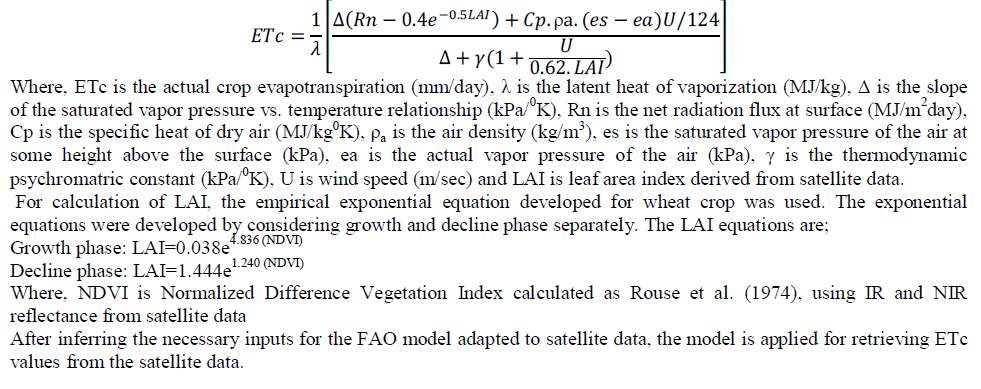 The service time of positive customers is generally distributed with distribution function B(x), density function b(x), Laplace-Stieltjes transform B*(s) and hazard rate function The service time of positive customers is generally distributed with distribution function B(x), density function b(x), Laplace-Stieltjes transform B*(s) and hazard rate function The arrival of a negative customer removes the positive customer in service from the system and causes the server breakdown. Also the server is subject to unpredictable breakdown while it is working. The life time of the server is exponentially distributed with rate α.The repair time of the failed server is generally distributed with distribution function R(x), density function r(x) and hazard rate function The arrival of a negative customer removes the positive customer in service from the system and causes the server breakdown. Also the server is subject to unpredictable breakdown while it is working. The life time of the server is exponentially distributed with rate α.The repair time of the failed server is generally distributed with distribution function R(x), density function r(x) and hazard rate function  |
STABILITY CONDITION |
 |
STEADY STATE DISTRIBUTION |
| In this section, by treating elapsed service time and elapsed repair time of the server as supplementary variables, the steady state probability generating functions of the orbit size distribution are derived. |
| Define the states of the server as |
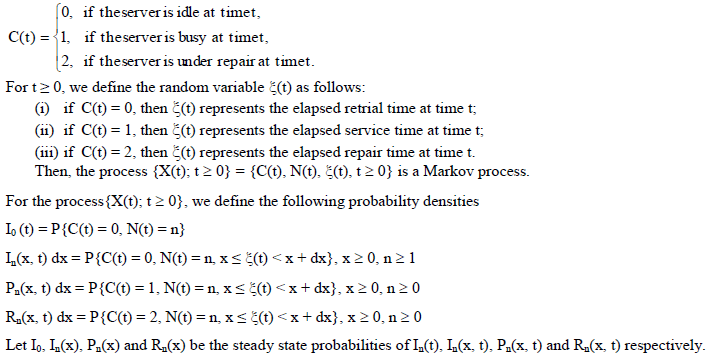 |
4.1 The steady state equations |
The system of equation that governs the model under supplementary variable technique are given below 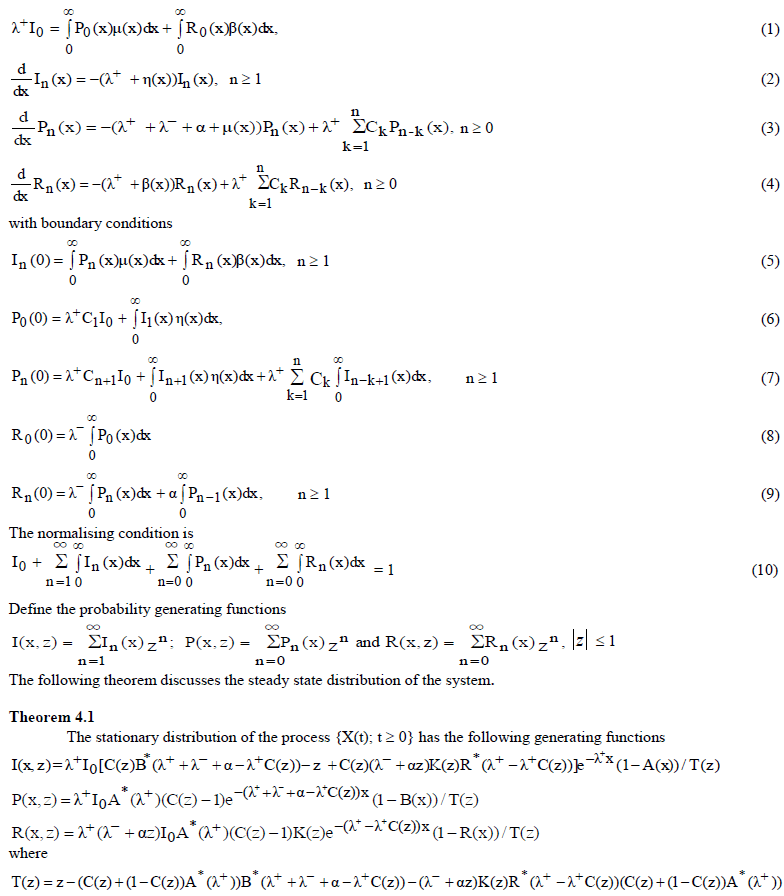 |
| Proof |
| Multiplying equations (2) to (9) by zn and summing over all possible values of n, we obtain the following equations: |
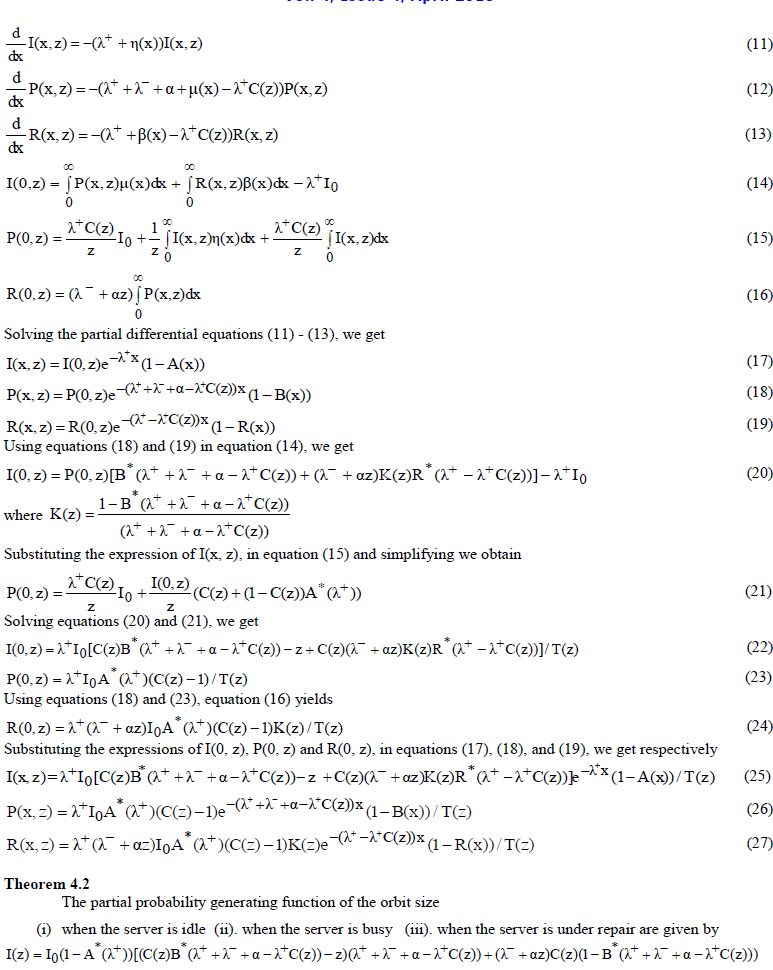 |
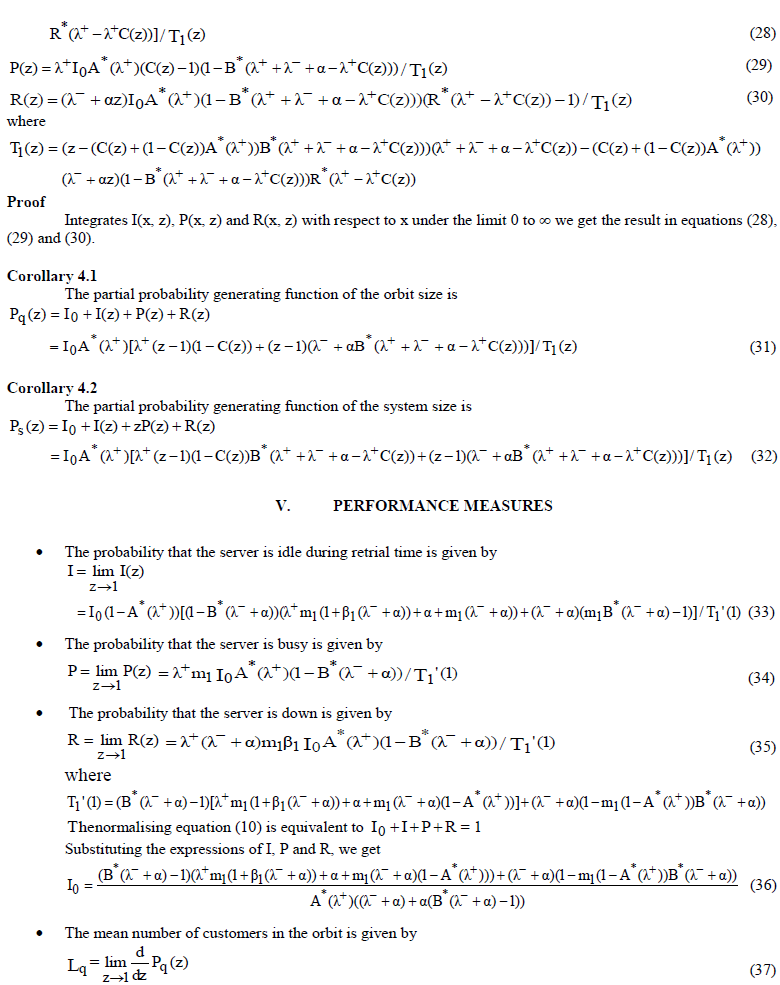 |
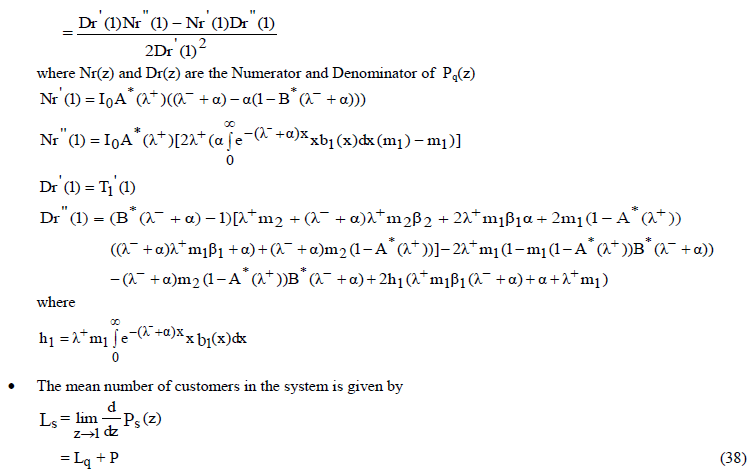 |
STOCHASTIC DECOMPOSITION |
| The stochastic decomposition property of the system size distribution is verified. The classical stochastic decomposition property shows that the steady state system size at an arbitrary point can be represented as the sum of two independent random variables, one of which is the system size of the corresponding queueing system without server vacations and the other is the orbit size given that the server is on vacations. Stochastic decomposition has also been held for retrial queues. |
Theorem 6.2 |
| The number of customers in the system (Ls) can be expressed as the sum of two independent random variables, one of which is the mean number of customers in batch arrival G-queue with server breakdown (L) and the other is the mean number of customers in the orbit given that the server is idle (LI). |
Proof |
| The probability generating function Φ(z) of the number of customers in batch arrival G-queue with server breakdown is given by |
 |
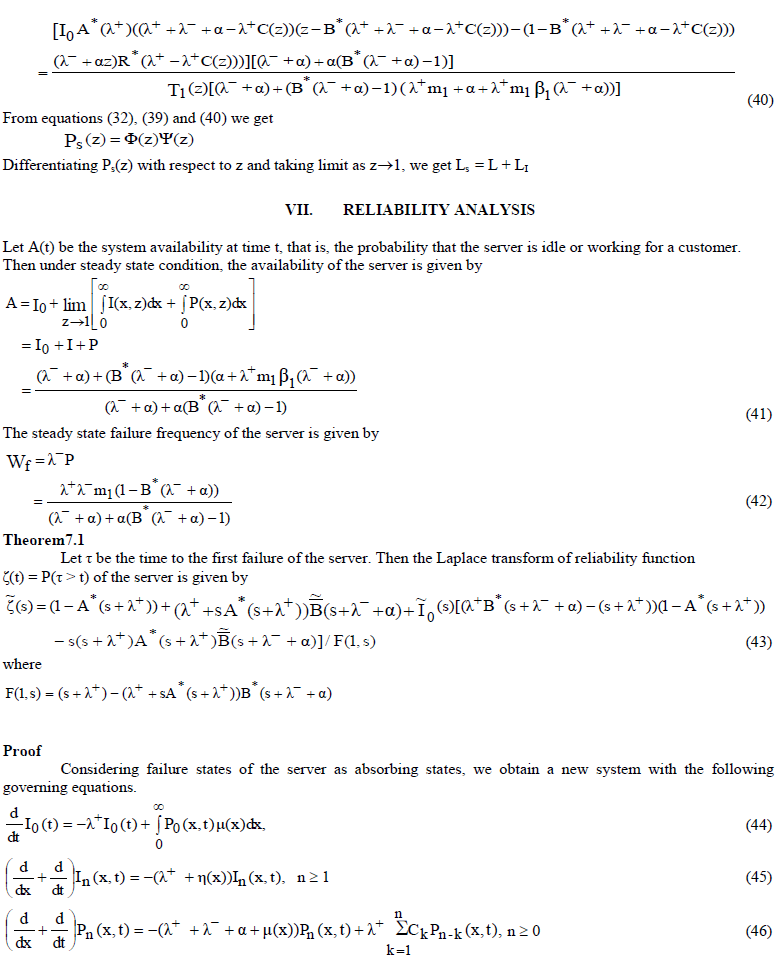 |
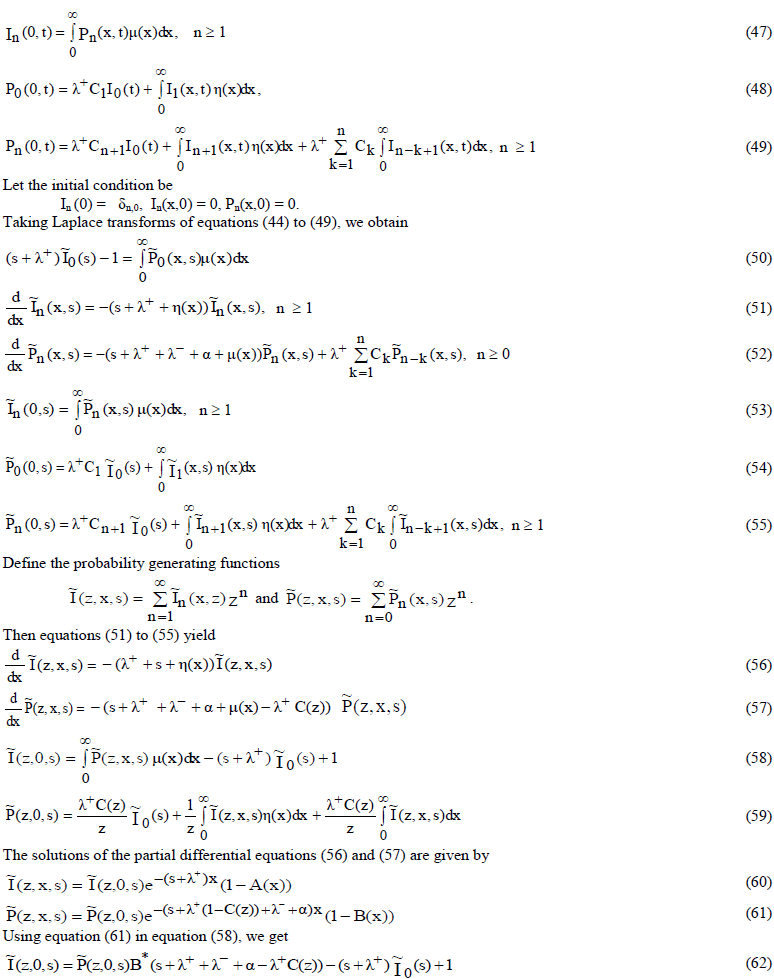 |
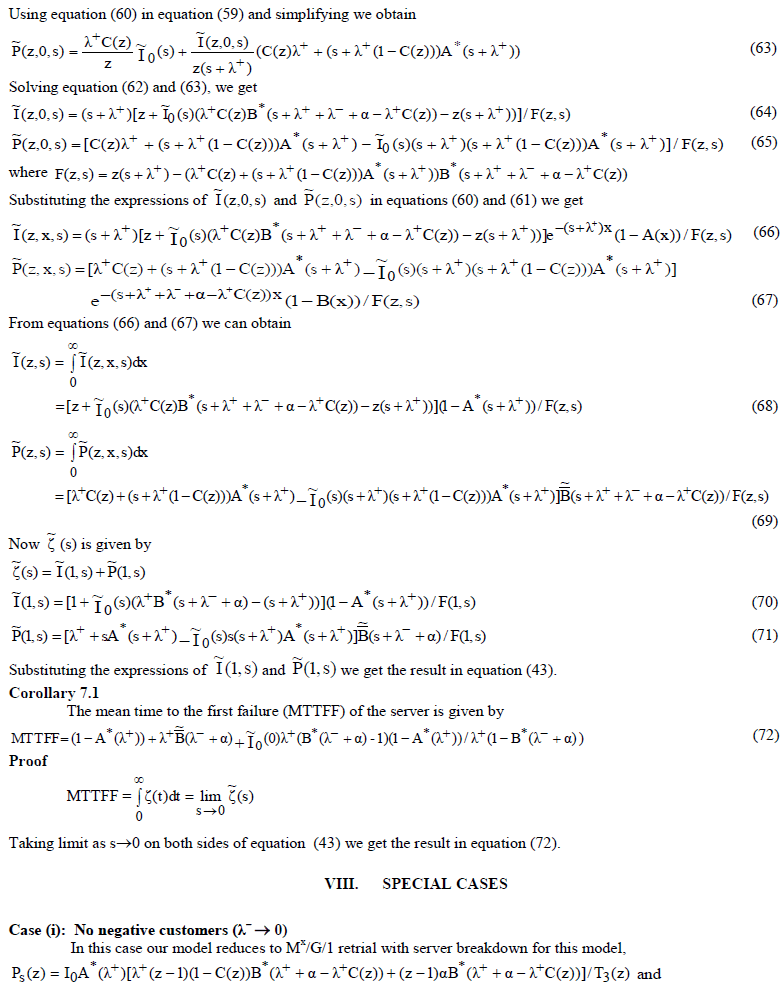 |
 |
NUMERICAL RESULTS |
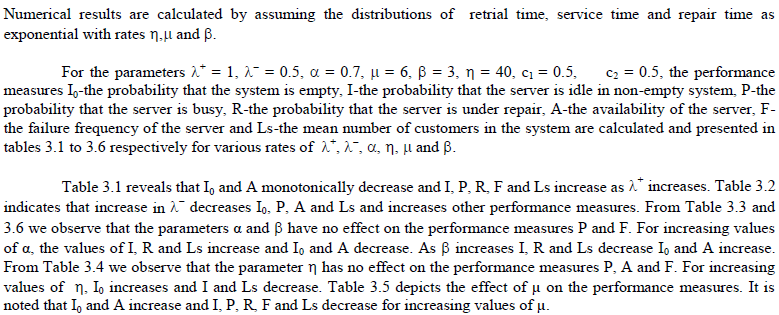 |
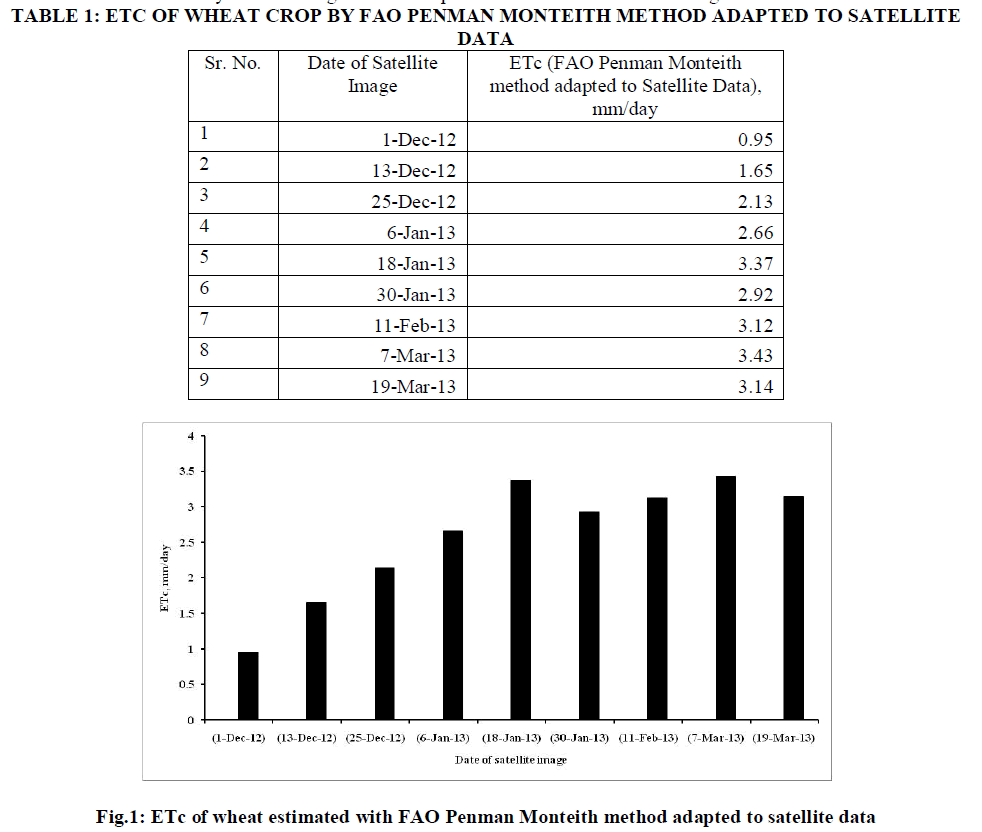 |
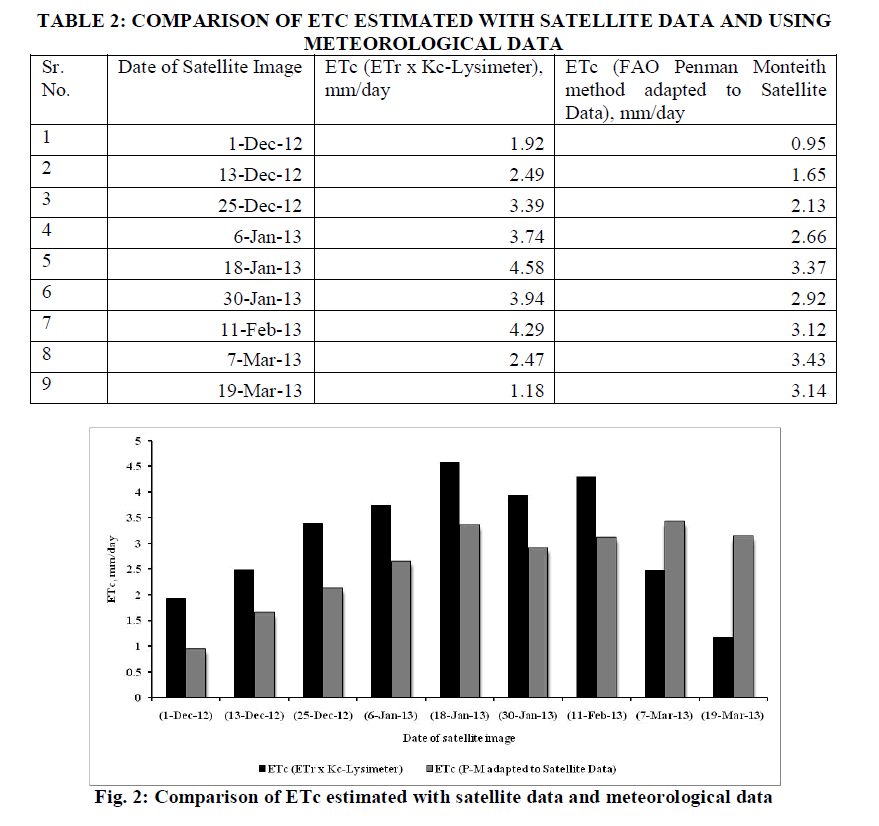 |
CONCLUSION |
| Batch arrival retrial G queue with server breakdown is analysed. The models considered are investigated using supplementary variable technique to obtain performance measures and reliability indices. Stochastic decomposition law is verified and special cases are discussed. Numerical analysis are carried out to analyse the effect of parameters on the system performance. |
References |
|